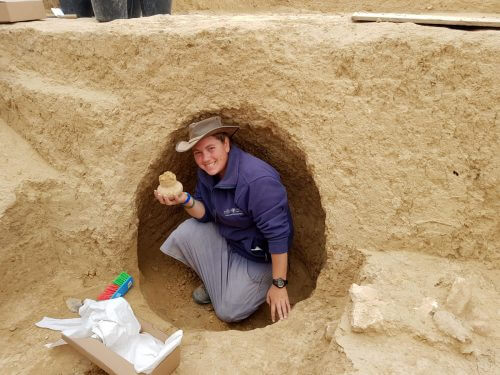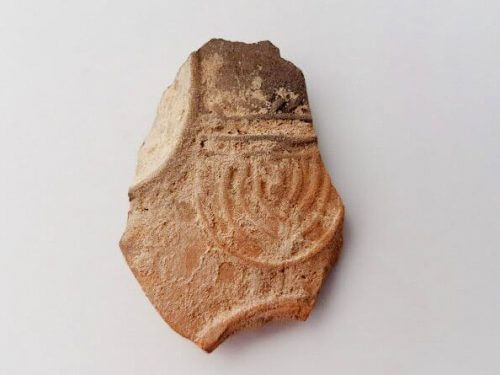In an archaeological dig conducted by the Ben-Gurion University of the Negev and the Antiquities Authority at the initiative of the Ministry of Housing and Construction before the establishment of a new neighborhood in the city as part of the Roof Agreement, a rare fragment of a candle with a nine-cane lamp decoration was discovered.

For the first time: the remains of a Jewish settlement from the end of the Second Temple period were uncovered in Be'er Sheva.
In an archaeological dig for the establishment of a neighborhood near the northern entrance to Beer Sheva, at the initiative of the Ministry of Housing and Construction - within the framework of the roof agreement in the Rakfat neighborhood in Beer Sheva, which covers thousands of units (4,150 units), evidence of the Jewish life that was conducted there is revealed. Among the findings - a candle with a lamp decoration - one of the earliest known in the research, chalk vessels that do not accept impurity, remains of an observation tower and more. At the site, which dates back to the 1st century AD and the Bar Kochba rebellion (135 AD), openings were also uncovered that led, apparently, to hiding or escape dens, dug into the ground.
According to the managers of the excavation, Dr. Peter Fabian from the Department of Biblical, Archeology and Ancient Near East at Ben-Gurion University of the Negev and Dr. Daniel Varga from the Antiquities Authority, "The remains of the settlement extend over an area of more than two dunams, and include various buildings and facilities - among other things, baking facilities were uncovered , ancient garbage pits, and an underground system that may have been used as a purification mikvah. The signs of the intense fire that were discovered on some of the remains at the site indicate a crisis that the settlement went through, most likely during the time of the Great Rebellion - around 70 AD.
The site is on the southern border of the ancient Kingdom of Judah, near the road route that led from the Tel Sheva area to the southern coastal plain. It is likely that the strategic location was a reason for the construction of a sturdy observation tower whose base was discovered in the excavation, and which covers 10x10 meters. A spiral staircase seems to have led to the two upper floors, which have not survived. In the late Roman period, the stones of the tower were taken and used for construction at nearby sites.

A special find uncovered in the excavation is a fragment of a candle of a type known in research as a Jewish "southern candle". This caused great excitement when, after cleaning it, an ornament of a nine-reed lamp was discovered on it. According to Dr. Fabian and Dr. Varga, "it seems that this is one of the earliest appearances known to the study of a lamp in art." It is interesting to note that in the few candles of this type that have been discovered with a menorah pattern, the menorah is never shown with 7 reeds as it was in the Temple, but with 11-8 reeds. The reason for this, according to the Babylonian Talmud, is that they do not make a menorah for home use, which looks exactly like the temple menorah.
Dozens of coins were discovered on the site, all made of copper and most of them belonging to the period of the Roman commissioners. Some were minted in the city of Ashkelon and some in various cities throughout the Roman Empire.

One response
The find should certainly not be connected with the menorah known to us from ancient traditions, although not before the Middle Ages, on the one hand, and it should not be seen as a deliberate disruption of the temple lamp, on the other hand. The find dated to the end of the Second Temple, perhaps to the beginning of the Great Revolt, during its course or its end, is definitely interesting and especially in light of its archaeological-find uniqueness and it is hard not to see a visual connection between it and the figure of the temple lamp as embossed on the front of the Titus Gate for example. Assuming that according to the ancient Halacha the temple lamp is not to be displayed for domestic, daily use, yet a kind of "temple lamp" appears before our eyes, it seems that there is indeed some connection between the find and the events involved in the great rebellion (73-66 CE) as a kind of motto hovering between holiness The temple was preceded by its destruction and the certain expectation for the renewal of its construction on the one hand as perhaps implied in its somewhat rebellious innovative laws that have a clear personal effect on the initiatives of Rabbi Yochanan ben Zakhai Dibna.